If you want to go on a Lisbon wine tour, but don’t know how to start to plan your trip, then this is the guide for you! Get ready to discover everything there is to know about this wine region, as well as some tour recommendations.
It doesn’t matter whether you’re already a seasoned wine lover or are just now learning about its wonders, going on a Lisbon wine tour is something that I recommend doing at least once in your life. It’s truly an amazing opportunity to understand Portugal’s winemaking traditions and sample some of the best wines in the country.
That’s why I’ve decided to create this guide to help you learn all about the Lisbon wine region and its subregions, the most utilized grapes and the best tours to go on. So, grab a glass and join me!
Index
- Wine Regions in Lisbon
- Lisbon wines and grape varieties
- Lisbon wine tours
- 3.1. Quinta da Regaleira and wine tasting in Sintra
- 3.2. Lisbon wine tour & winemaker for a day
- 3.3. Vinhos Cortém
- 3.4. Local food and wine tour
- 3.5. 4WD vineyards explorations
- 3.6. Private Arrábida van tour
- 3.7. Food and wine tour by tuk-tuk
- 3.8. Horseback riding and wine tasting
- 3.9. Lisbon wine tour with sunset sailing
- When’s the best time for wine tours?
- Essential tips for your wine tasting experience
1. wine regions in lisbon
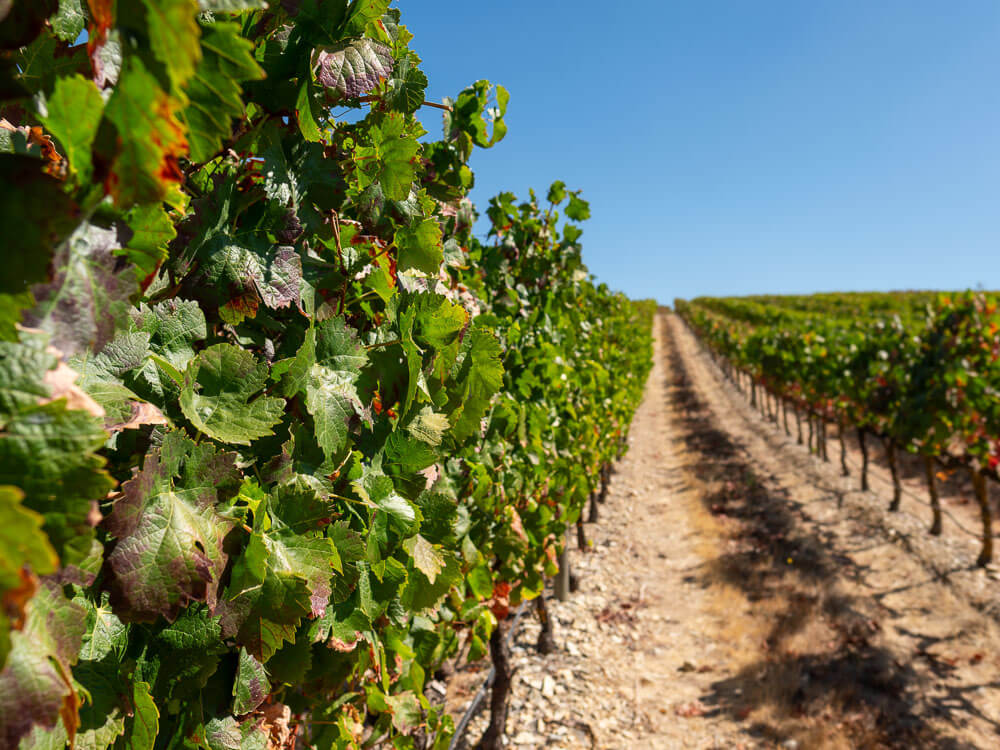
The Lisbon wine region, formerly known as Estremadura, is divided into nine sub-regions, each with a delightful mix of historical background and modern winemaking techniques.
I find it very interesting that, despite all of them being in the same country and quite close to one another, they all produce very different and unique wines, ranging from reds to whites.
This mainly happens because of microclimates affected by the Atlantic Ocean, different soil types, and local grape varieties that had to evolve under these conditions.
But I’m getting ahead of myself! In the next topics, I’ll get into more details so you can better understand each sub-region before booking your wine tour.
1.1. Bucelas
Let’s start with Bucelas, a sub-region northeast of Lisbon, known for producing white wines that are fresh and mineral-rich, well-paired with seafood.
The most used grape variety here is the Arinto, which does well in the region’s limestone soil, producing whites with noticeable acidity and citrus flavors with mineral elements. This grape also maintains its acidity in various temperatures, helping keep Bucelas’ wines lively.
If you’re a fan of whites, you might want to consider touring Bucelas to try some unique wines, learn about how the climate affects winemaking and to grow Arinto grapes.
1.2. Colares
Colares, located on the Atlantic coast northwest of Lisbon, is known for its sandy soil and maritime influence, which significantly influences the wine profile. Although the region has been greatly impacted by urban sprawl, it’s now slowly regaining some of its former glory.
One of the things that make this area so interesting is that its wines are made from grape varieties that are only grown there: Ramisco for reds and Malvasia de Colares for whites, giving Colares wines a notable character that appeals to so many enthusiasts.
Ramisco grapes yield reds with a medium body and strong tannins, while Malvasia de Colares produces whites with notable acidity and complexity. Both types have great value due to their aging potential and distinct aromas.
Those looking to explore this part of Portugal can join a Lisbon wine tour that visits the vineyards in Colares, where these grapes thrive despite challenging conditions, and sample wines that reflect this coastal environment.
1.3. Carcavelos
Carcavelos is located on the coast between Lisbon and Cascais in western Portugal, with a hybrid Mediterranean/ oceanic climate and calcareous soils. This region’s wines became famous in the 18th century, but, like Colares, its production decreased considerably due to urban sprawl.
However, Carcavelos still produces wines, although on a much smaller scale, with a focus on fortified wines similar to Port. These are complex wines that vary from dry to sweet and typically feature hints of dried fruits, nuts, and spices.
Carcavelos provides an opportunity to explore a winemaking region that’s historically significant yet close to the capital. Production is now limited, but it remains a place where you can sample unique and rare Portuguese wines. Besides that, you’ll also gain insight into how vineyards preserved their heritage while adjusting to modern times.
1.4. Alenquer
Alenquer, arguably the most renowned subregion of the Lisbon wine region, is located about 40 km from both the capital and the coast, surrounded by other subregions. Because of its inland position, the harsh coastal winds have less influence in the growing process, creating a drier and more consistent climate.
Up to 2002, when some French varieties were introduced in the region, Alenquer prioritized using Portuguese grape varieties, such as Fernão Pires and Vital. The reds produced there are known for their fruitiness with spice notes, while the whites are notable for their acidity, with either citrus or floral aromas.
Visiting Alenquer is definitely worth it, not only because it’s home to some of the best wines in Portugal, but it’s also conveniently close to Lisbon, making it ideal for day trips.
1.5. Arruda
Arruda, located around 35 km north of Lisbon, has a strong maritime influence due to its proximity to the Atlantic ocean. The soil is composed of lime and sandstone, and the terrain has numerous hills and valleys, creating microclimates ideal for grape cultivation.
This region is mainly known for its soft reds, with fruity flavors and spice notes, but also produces some fresh and aromatic whites. The most commonly used grapes are Touriga Franca and Nacional, Arinto and Fernão Pires, as well as some international varieties.
Fun fact: you’re probably not going to find wines from this region outside of the Iberian Peninsula, so don’t miss the opportunity to taste them while in Portugal!
1.6. Lourinhã
Lourinhã, located on the Atlantic coast west of Lisbon, has a Mediterranean climate greatly influenced by the ocean, resulting in ideal conditions for grape cultivation, with cool summers and mild winters.
What’s interesting about this region is that it’s actually the first and only subregion in Portugal dedicated to the production of brandy, or aguardente.
The wines produced to become brandy have high acidity and low alcohol content, and undergo a chemical-free fermentation before being distilled and then slowly aged in oak barrels. It results in a topaz colored digestive drink, with notes of coffee, nuts and vanilla and intense, fruity aroma.
1.7. Óbidos
Located about 80 kilometers west of Lisbon, Óbidos is a small medieval town, known for being the birthplace of “ginja”, a traditional Portuguese cherry liqueur. Because of its windy and cool weather, it’s not really suitable for the production of refined reds and whites…
However, it has the perfect conditions to produce great sparkling wines!
The most commonly used grapes are Arinto, Periquita, Tinta Miuda, and Vital, producing wines that are less effervescent than Champagne, but more so than Vinho Verde. These wines usually go well with seafood, but are also very enjoyable by themselves.
1.8. Torres Vedras
Torres Vedras, west of Lisbon and near the Atlantic Ocean, has a long history in winemaking: its roots go back to the Roman occupation in Portugal. Its maritime climate contributes to the wine’s high quality, which the region is known for.
The primary grapes grown there are Arinto, Graciano, Rabo de Ovelha, Seara Nova, and Vital, producing wines that are very aromatic and range from medium to bold.
The reds tend to be complex, full-bodied, dry and have a high alcoholic value, while the whites are light, aromatic, fruity, and have low alcoholic value.
1.8. Encostas d’Aire
Encostas d’Aire, located north of Lisbon, is known for its longstanding winemaking tradition, and is becoming increasingly popular on tours due to its wine’s top-quality and uniqueness.
The reds from this region are light and well-balanced, perfect for those who prefer more subtle wines. They start with a bit of astringency but become smoother as they age, a transformation that attracts attention from those familiar with Portuguese varieties.
The whites exhibit a bright yellow color and tend to be fruity with noticeable aromas and some persistence, reflecting the local grape types. The grape varieties most grown in the region are Malvasia, Arinto, Fernão Pires, Castelão and Baga.
2. Lisbon wines and grape varieties
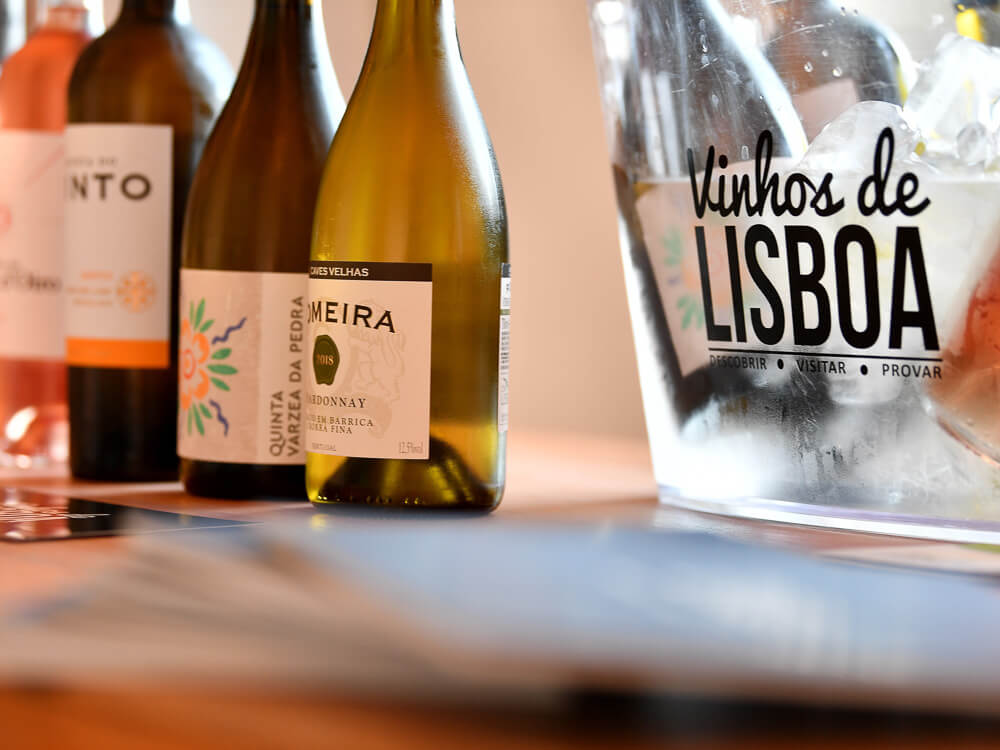
2.1. White Wines
White wines from the Lisbon wine region are produced using a variety of native grapes that play a key role in defining their diverse taste profiles. They add distinctiveness to blends or single-grape wines, which is why Lisbon’s white wines are so well-known locally and internationally.
The main grapes used are:
- Arinto: recognized for its acidity and citrus notes.
- Alvarinho: known for its aromatic quality with hints of stone fruits.
- Fernão Pires: known for carrying floral aromas, pairing well with different foods.
- Loureiro: floral notes.
- Malvasia: smooth texture and sometimes nutty flavors.
- Seara-Nova: notable structure and acidity.
- Vital: freshness and mineral notes.
2.2. Red Wines
Red wines from the Lisbon wine region are internationally recognized for their quality and value, exhibiting a wide range of styles, from light and fruity to bold and full-bodied.
Winemakers in the region have been experimenting with different winemaking techniques and grape varieties, leading to the production of increasingly refined and expressive wines.
Here are the main grapes used:
- Alicante Bouschet: a common variety, recognized for its color and fruit notes. It contributes significantly to the region’s wine blends, adding structure.
- Aragonez: another grape variety extensively grown in Lisbon, valued for its consistent ripening. It helps produce balanced wines with milder tannins and berry flavors.
- Castelão: a grape variety that brings a traditional touch to wines with its spicy and fruity profile.
- Tinta Roriz: or Tempranillo as it’s known elsewhere, adds versatility and potential for aging.
- Touriga Franca: usually has a secondary role in blends, imparting subtle floral aromas.
- Touriga Nacional: noted for its bold berry flavors and violet scents.
- Trincadeira: acidity and aromatic features that add depth to the wines.
3. Top 9 Lisbon wine tours
3.1. Quinta da Regaleira and wine tasting in Sintra
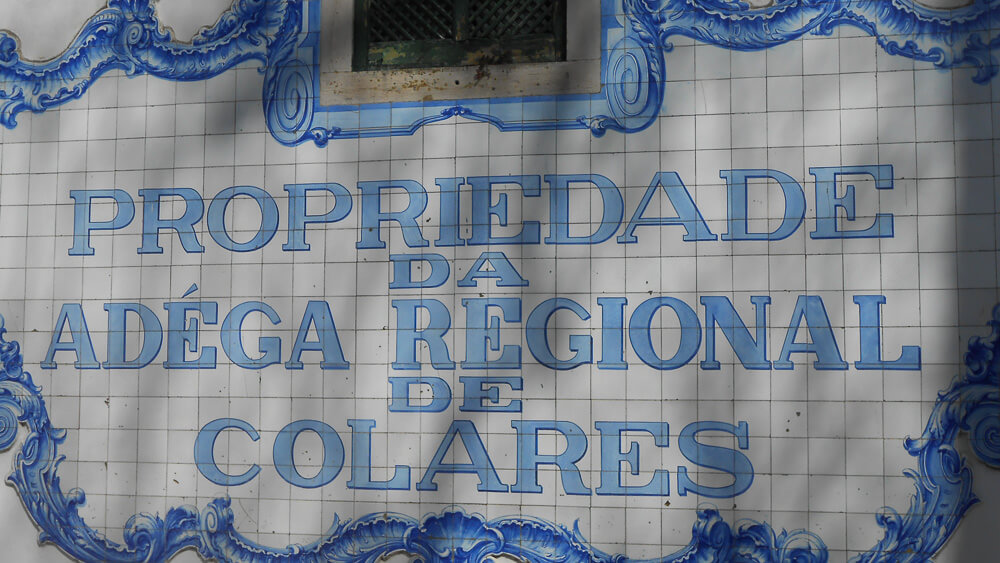
Sintra is a dream day trip to most tourists, and this tour is an amazing way to get to know this beautiful city. You’ll start by visiting Quinta da Regaleira, where you’ll learn about its history and visit the famous Initiation Wells.
Then, you’ll head to Colares to enjoy a complete Portuguese meal, before visiting a vineyard and sampling some of the region’s characteristic wines. After that, you’ll go to Praia das Maçãs, a beautiful beach, and finish the tour back in Sintra, where you’ll enjoy some regional sweets.
It’s truly an unforgettable experience!
3.2. lisbon Wine tour & winemaker for a day
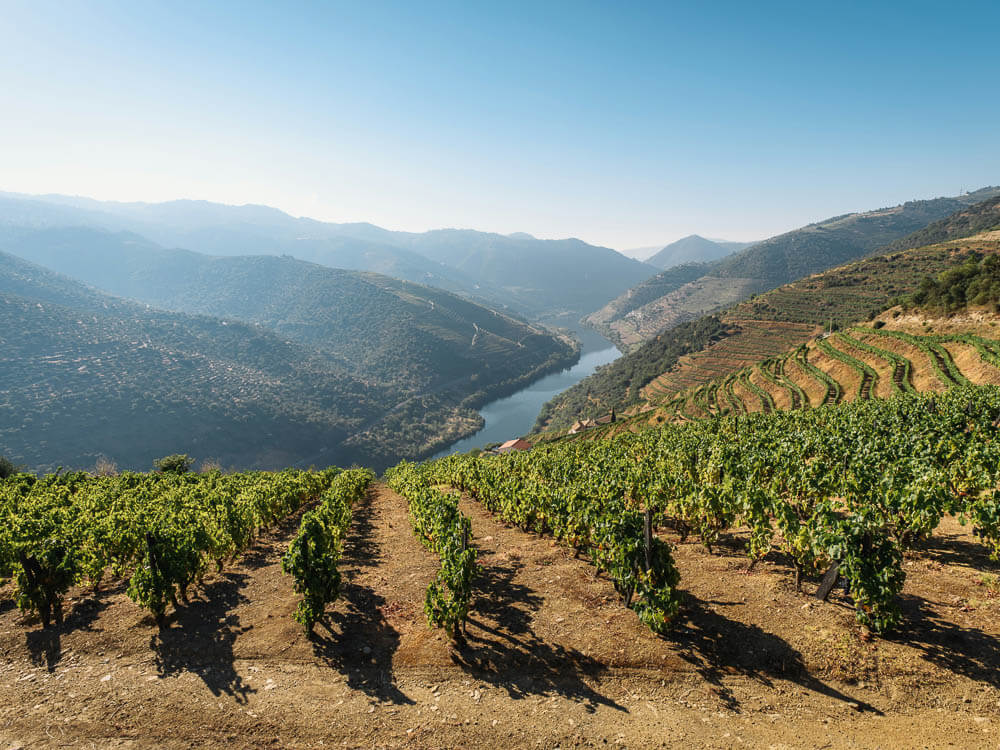
In this tour, you’ll have a unique wine experience in Torres Vedras: besides visiting the winery, terraces and tasting local wines accompanied by regional delicacies, you’ll also be responsible for creating your own wine!
To do that, you’ll taste different mono caste wines, select the ones you like the most and decide how much to blend it with a different wine. You’ll then bottle, cork and label it with your own name.
It’s an engaging experience that I highly recommend, and I’m sure you’ll leave feeling a lot more connected to Portuguese winemaking history!
3.3. Vinhos Cortém
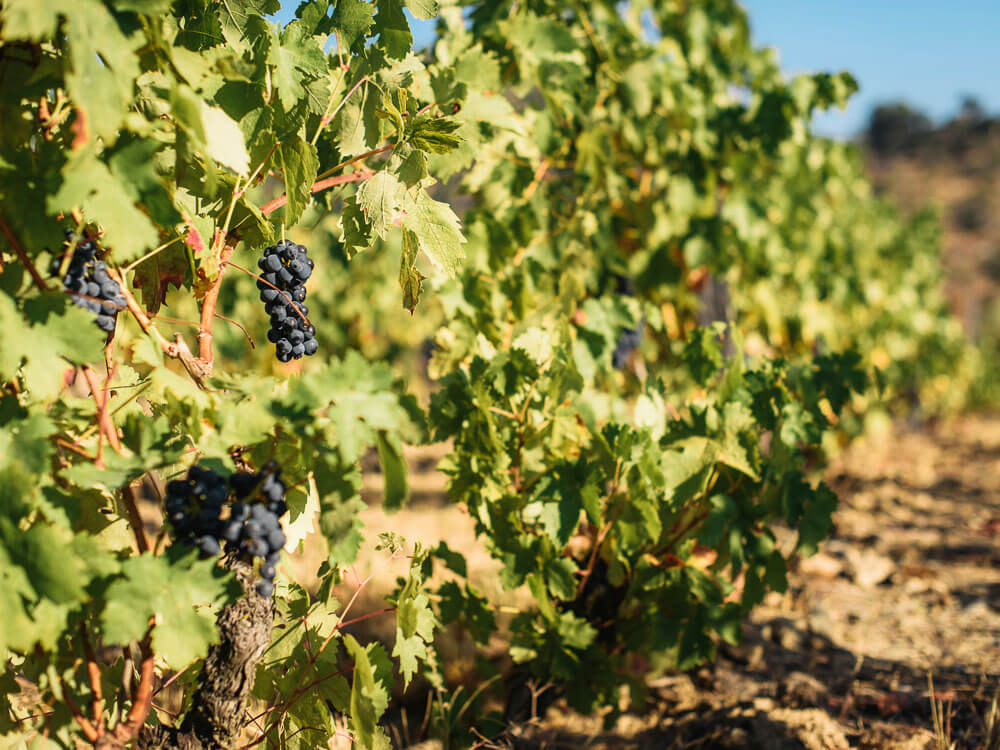
Vinhos Cortém is a winery located near Lisbon, spanning 4.5 hectares, focused on sustainable practices and traditional wine production methods. It’s a must-visit for those interested in organic winemaking.
The winery conducts tours that explain the process from growing grapes to final bottling, and guests learn all about their methods for managing biodiversity and conserving resources on-site.
Tasting sessions at Vinhos Cortém include not only wines, but also Portuguese olives and bread. This is a pairing that emphasizes the connection between local foods and showcase how they can enhance the enjoyment of regional wines!
3.4. Local Food and Wine Tour
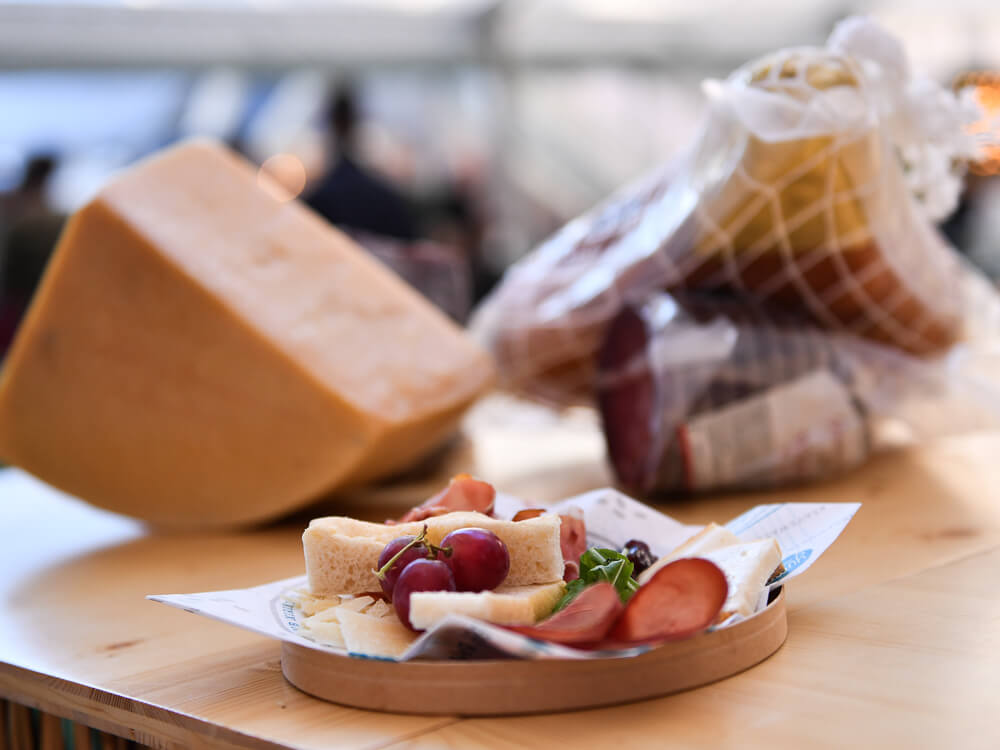
Joining a guided food tour in Lisbon offers a way to explore the city’s culinary offerings. These tours allow participants to try Portuguese flavors and visit local favorites.
On a Lisbon wine and food tour guests visit different venues, ranging from old taverns to modern restaurants, and taste regional wines, which play an integral role in Portuguese meals.
Guides share information about where ingredients come from and how dishes are made while explaining the particularities of Lisbon’s food culture.
3.5. 4WD vineyards explorations

If you’re interested in combining adventure with wine tasting, you’ll love this tour! It goes beyond the usual tastings: it actually takes you to a drive through the vineyards in a 4DW convertible car.
This allows visitors to take a closer look at the land that contributes to Lisbon’s wine region, and understand how location affects viticulture.
You’ll also get to visit local cellars, get insights into the area’s history, learn about traditional and modern methods in winemaking, and, of course, try amazing wines.
3.6. Private Arrábida Van Tour

The Private Arrábida Van Tour takes you on a journey to Parque Nacional da Arrábida, a beautiful park recognized for its varied landscape, with forests, beaches and cliffs.
Since the park is located between Setúbal and Sesimbra, you’ll also get to stop at these cities to enjoy some of the seafood dishes they’re known for. Besides that, the tour includes opportunities to sample wines from local vineyards.
You’ll learn about the Arrábida region landscape, culinary heritage and enjoy beautiful views, all without having to navigate through endless tourist crowds.
3.7. Food and Wine Tour by Tuk-Tuk

The tuk-tuk is a great way to explore Lisbon’s streets and historical areas while tasting traditional Portuguese foods along the way.
This tour is designed to showcase genuine local eateries that might be overlooked by tourists. It offers a range of tastes, including petiscos (small plates common in Portugal, similar to tapas) and pastries, such as pastel de nata.
You’ll also get wine tastings at certain stops, presenting both popular and lesser-known wines sourced from nearby vineyards. Guides provide information about each wine tasted, explaining how it fits into winemaking traditions and pairs with local dishes.
3.8. Horseback Riding and Wine Tasting
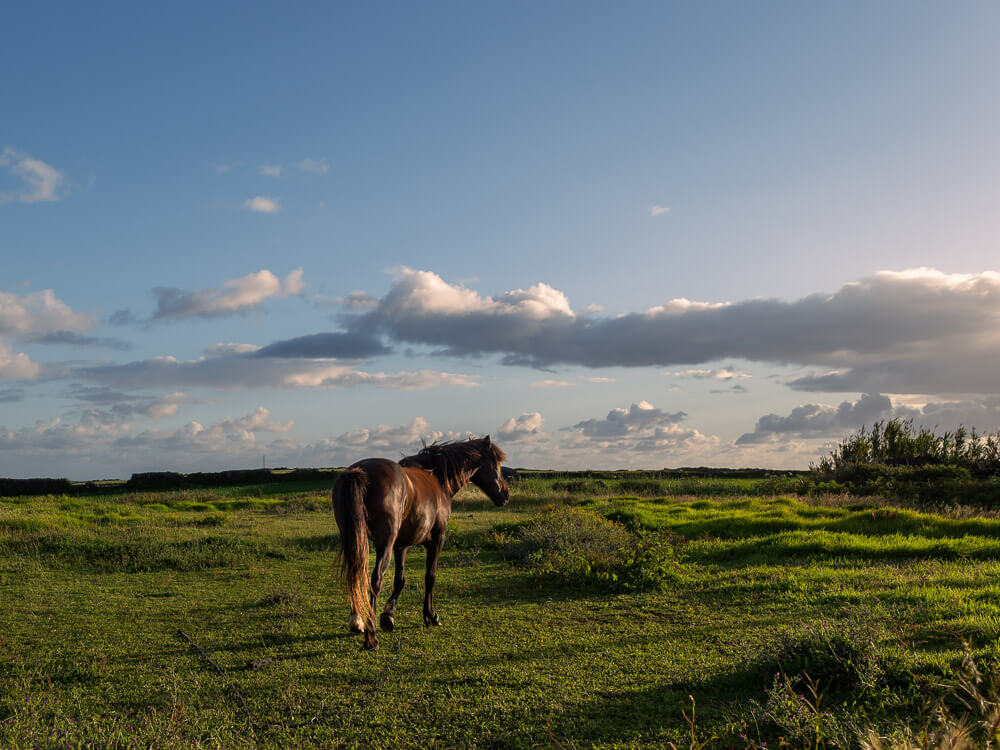
This tour begins with a trip through the scenic vineyards of the Ribatejo wine region. Then, you’ll stop at a local winery for a tour, and sample a variety of Portuguese wines while learning about the winemaking process.
After having lunch in a nearby town, you’ll take a guided tour to a family-owned estate before mounting up for a horseback riding tour around the vineyard.
And don’t worry if you haven’t ridden before: you’ll be instructed beforehand and the horses are well-trained and suitable for both new and seasoned riders!
3.9. Lisbon wine tour with Sunset Sailing

In this evening tour, you’ll sail by Lisbon’s historical monuments and bridges while trying Portuguese wines and seeing the city’s lights come to life. You’ll get to see landmarks like St. George’s Castle, Belem Tower, and Monument to the Discoveries.
It includes different regional varieties such as Vinho Verde and robust reds, and your guides will provide information about each wine, helping newcomers understand what makes Lisbon’s offerings distinct.
4. When’s the best time for wine tours?
The most popular time for wine tours is during summer, from June through August. But I’ll let you in on a little secret: the actual best times to visit wineries are spring and fall.
That’s because during these seasons the weather is pleasant and mild, instead of scorching hot, which is ideal to enjoy outdoor activities. Besides, there aren’t as many tourists, which means you’ll get a more personal experience and get more interactions the winemakers.
This schedule will also allow you to see important stages in grape cultivation: either the start of growth in spring or harvest time starting at the end of summer into fall.
5. Essential tips for your lisbon wine tour
The first and probably most important advice I can give you is: plan in advance! There are many popular tours in the Lisbon area, and it’s not uncommon for them to sell out. So, booking early is your best bet to make sure you’ll get the tours you want.
This also gives you time to look into the wineries beforehand, learn which wines you’ll encounter, and think of questions for the winemakers. You don’t have to do these things, but I like to come prepared so I can make the most of the tours and the expert’s knowledge!
Besides that, remember that pacing is essential during a wine tour. You should enjoy the wines slowly, preferably in small sips to help prevent palate fatigue and, you know… Intoxication. I also recommend drinking plenty of water and eating before and during.
My last tip is to prioritize comfort when planning your outfit for a vineyard visit. Just wear casual clothing, such as jeans and a t-shirt and comfortable shoes. Oh, and remember to bring a light jacket (or a heavy one, depending on the time of year you’re visiting), because the vineyards tend to be cooler than the city.
So, which lisbon wine tour will you choose?

The Lisbon wine region is a must-visit destination for any wine lover, offering a wide range of options for all tastes. You’ll also learn about the winemaking history and methods, combining age-old traditions with modern practices.
In my opinion, participating in a Lisbon wine tour adds a special depth to the tasting experience. You’ll get information on local grape growing methods and gain a greater understanding of the wines produced in the region.
So, it doesn’t matter if you’re already a wine connoisseur, interested in learning more about it or just looking forward to tasting some unique flavors… Going on a Lisbon wine tour is something I can’t recommend enough!


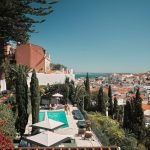





1 thought on “Lisbon Wine Tour: Your Complete Guide”